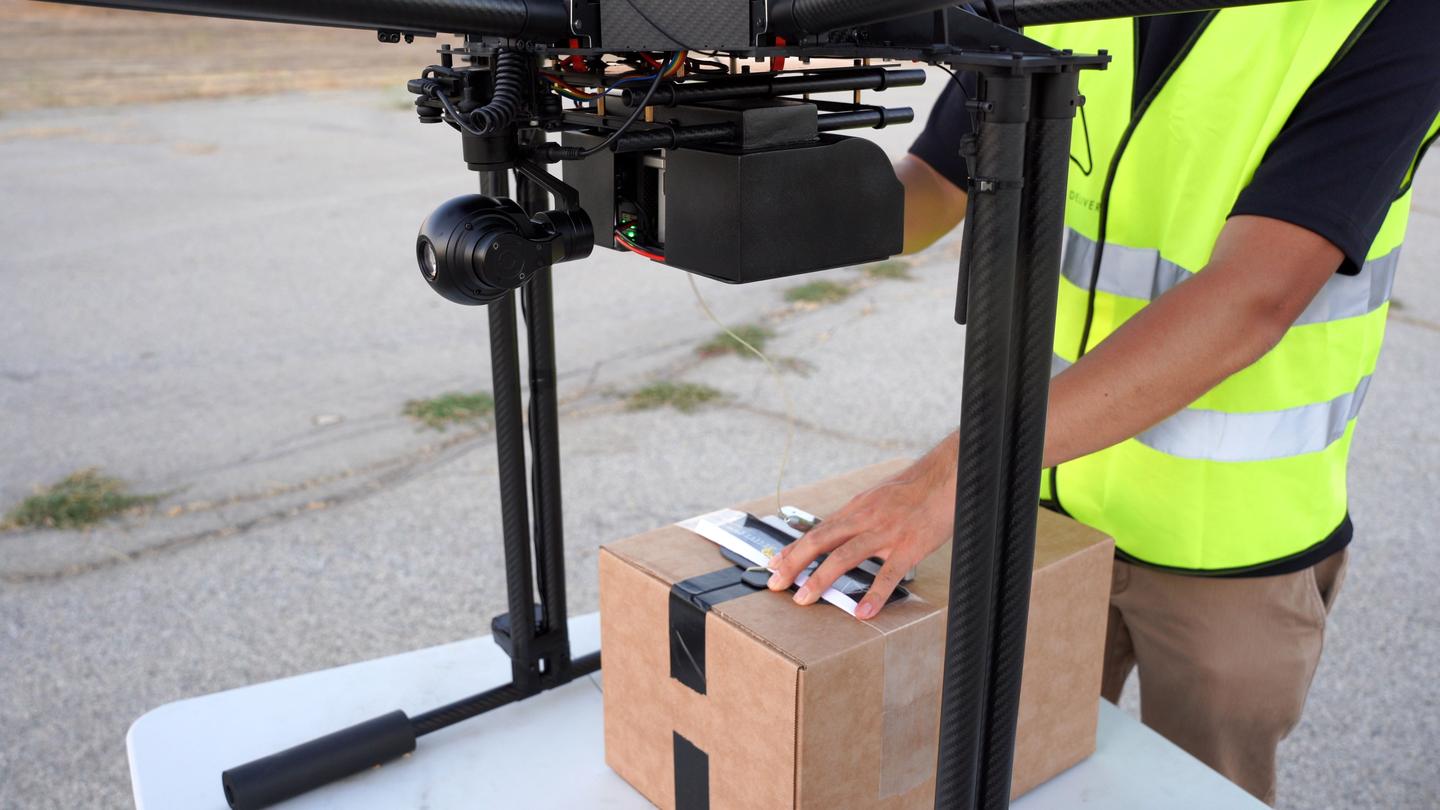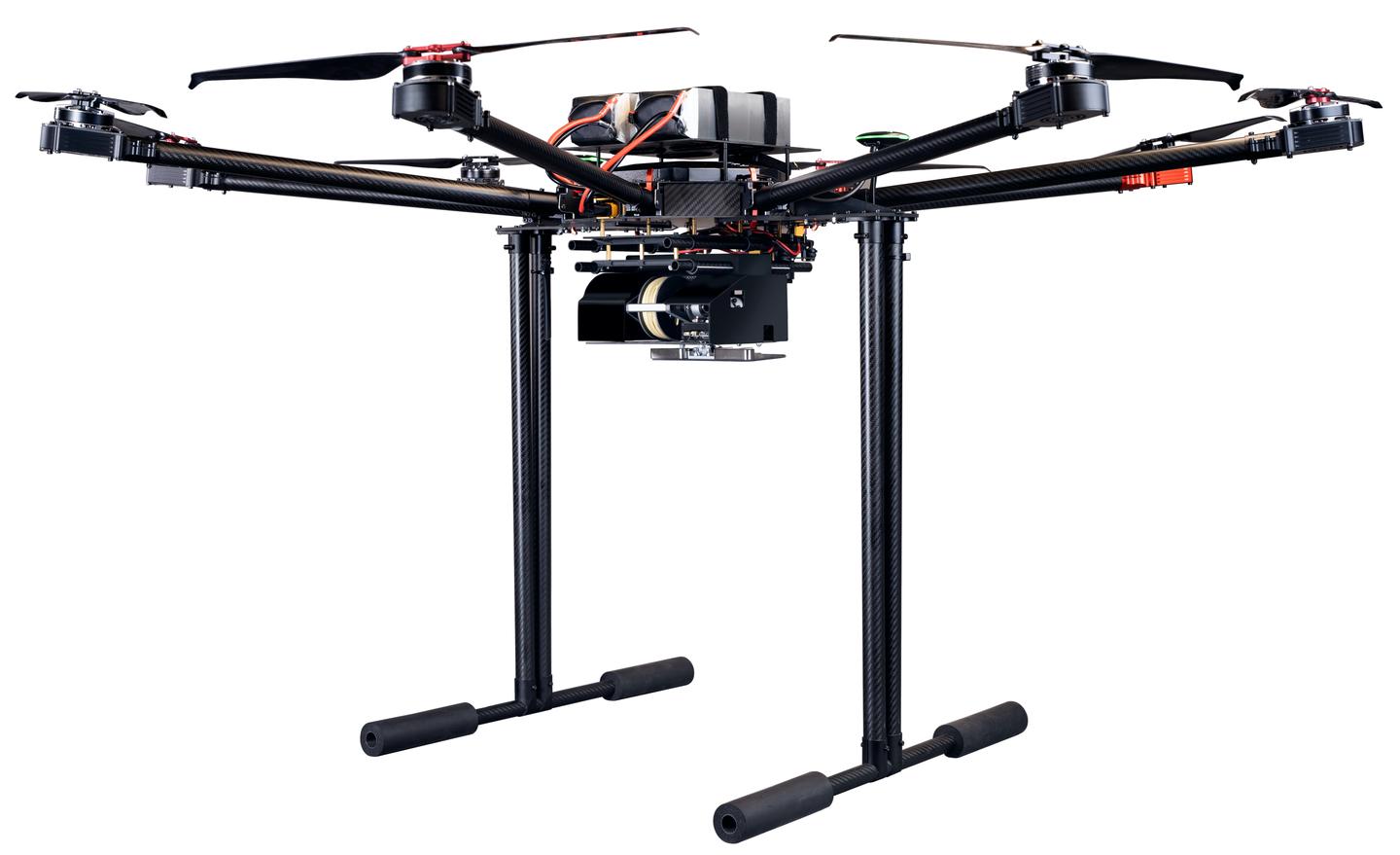In most delivery-by-drone systems, cargo has to be packed into system-specific containers, or must fit inside a designated onboard compartment. The new RDS2 setup, however, can transport almost any shape or size of parcel, weighing as much as 10 kg (22 lb).
Its name an acronym for Rapid Delivery System 2, RDS2 was created by Los Angeles-based startup A2Z Drone Delivery.
That company’s existing RDS1 system incorporates a motorized reel of Kevlar cord, which is installed on the underside of a remotely controlled third-party multicopter drone. At the end of that cord is an elastic fabric pouch that can hold a payload weighing up to 2 kg (4.4 lb).
When the drone reaches its destination, it remains hovering at an altitude of 46 m (150 ft). It then releases the brake on its tether reel, allowing the payload pouch to freely fall through the air. Shortly before that pouch reaches the ground, however, the reel brake is gently reapplied, slowing the payload’s descent to a stop.
This functionality is made possible by a LiDAR (Light Detection and Ranging) sensor on the drone, which measures exactly how far the aircraft is from the ground.
The system is intended not only to spare clients from the noise and potential danger of a low-hovering drone, but it also keeps the drone from having to waste time and battery power by maneuvering its way around obstacles such as tree branches and power lines. The free-fall component is likewise intended to save time and power, as compared to setups in which the reel’s motor is used to slowly lower the payload to its recipient.

A2Z Drone Delivery
RDS2 works in the same fashion, but it replaces the pouch with a hook that engages bags, buckets or a special handle made of reinforced strapping tape. The latter is adhered across the top of the client’s box or other parcel, and can support loads of up to 45 kg (99 lb).
Whatever the case, the hook remains securely closed while the drone is in flight. Once the payload reaches the ground, however, the hook automatically releases the package. This means that loads can be dropped off even if there’s no one present to receive them.
If a recipient is present – and they wish to send along a package of their own (or return one to the sender) – they can attach it to the hook, which then gets reeled back up to the drone. It should be noted that while RDS2 can carry and lower loads of up to 10 kg, it can only reel up loads of no more than 5 kg (11 lb).

A2Z Drone Delivery
As is the case with RDS1, the 1.5-kg (3.3 lb) RDS2 setup can be installed on the undercarriage of third-party heavy-lift drones such as the DJI Matrice 600. For buyers wanting a full package, though, it’s also built into A2Z’s new RDST octocopter drone.
That aircraft can fly autonomously, or be remotely radio-controlled up to a distance of 30 km (18.6 miles) – its communications range is unlimited if an optional 4G LTE cellular connection is used. One charge of its lithium battery pack should be good for up to 36 minutes of flight time. One thing to be aware of is that even though the RDS2 system supports heavier loads, the RDST drone itself has a maximum payload capacity of 5 kg.
Both RDS2 and the RDST drone can be ordered via the A2Z Drone Delivery website – pricing is available on request. They can be seen in action, in the following video.
A2Z RDS2 Delivery Winch & RDST Cargo Drone
Source: A2Z Drone Delivery
Source of Article